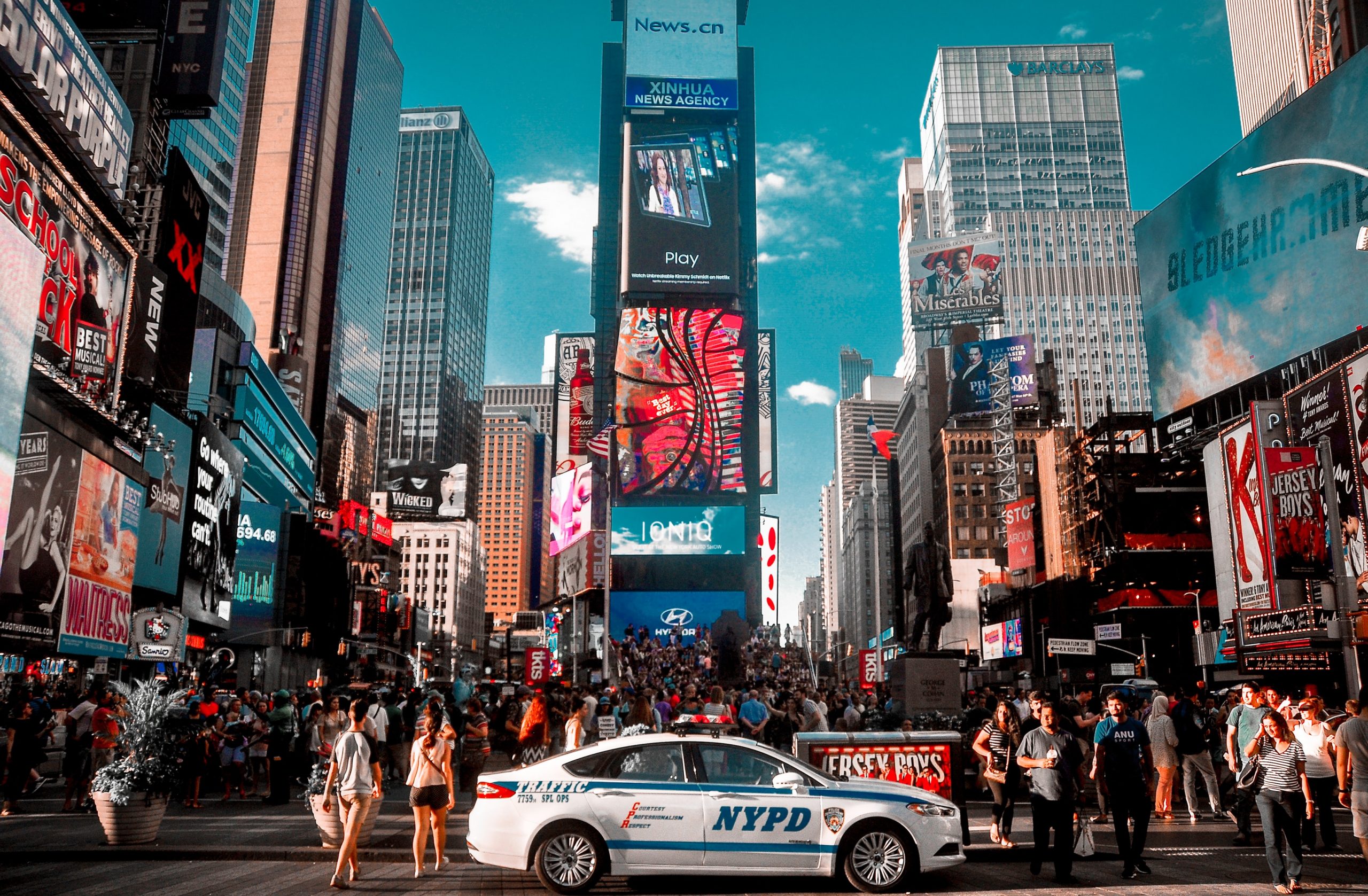A billboard is a large outdoor advertising structure that is typically located in a busy place and shows advertisements to passing cars and pedestrians.
Its main goal is to quickly, within a few seconds, capture the interest of consumers, especially potential customers.
With vibrant visuals and concise, impactful messages, they aim to create a memorable impression, encouraging people to learn more about the advertised product or service.
Types of billboards
There are many types of billboards, including:
Traditional or static: These are the traditional vinyl billboards with a single, permanent message.
Digital: Modern electronic billboards can display multiple ads in rotation. The advertiser can use more dynamic content, which can be remotely changed. Times Square in New York and Piccadilly Circus in London have many digital billboards.
Mobile: These are attached to moving vehicles, such as trucks and even boats.

Pros & cons
Pros
Visibility: They are very easy to spot due to their size and location.
Consistent exposure: Unlike TV or radio advertisements, billboards are visible all the time.
Geographical targeting: Billboards target specific areas or demographics, which is great for local businesses.
Cost-Effective: When comparing the cost per impression, billboard advertising tends to be a cheaper option than other forms of media, especially in densely-populated areas.
Cons
Limited content: Consumers only view billboards for a short time. Remember to make your message as clear and recognizable as possible.
Static location: Traditional billboards are restricted to one location.
Maintenance: They are exposed to the elements, and therefore require constant maintenance.
Modern billboards
Billboard advertising has adapted to new technology to stay relevant. Digital ones today can:
Change content based on time or weather: They can, for example, display coffee in the morning, or umbrellas when it’s raining.
Integrate interactive content: Some of them use augmented reality (AR) to engage with passers-by.
Collect data: Some Digital billboards can collect data regarding impressions or interactions. For most marketers, this kind of data is extremely valuable.
